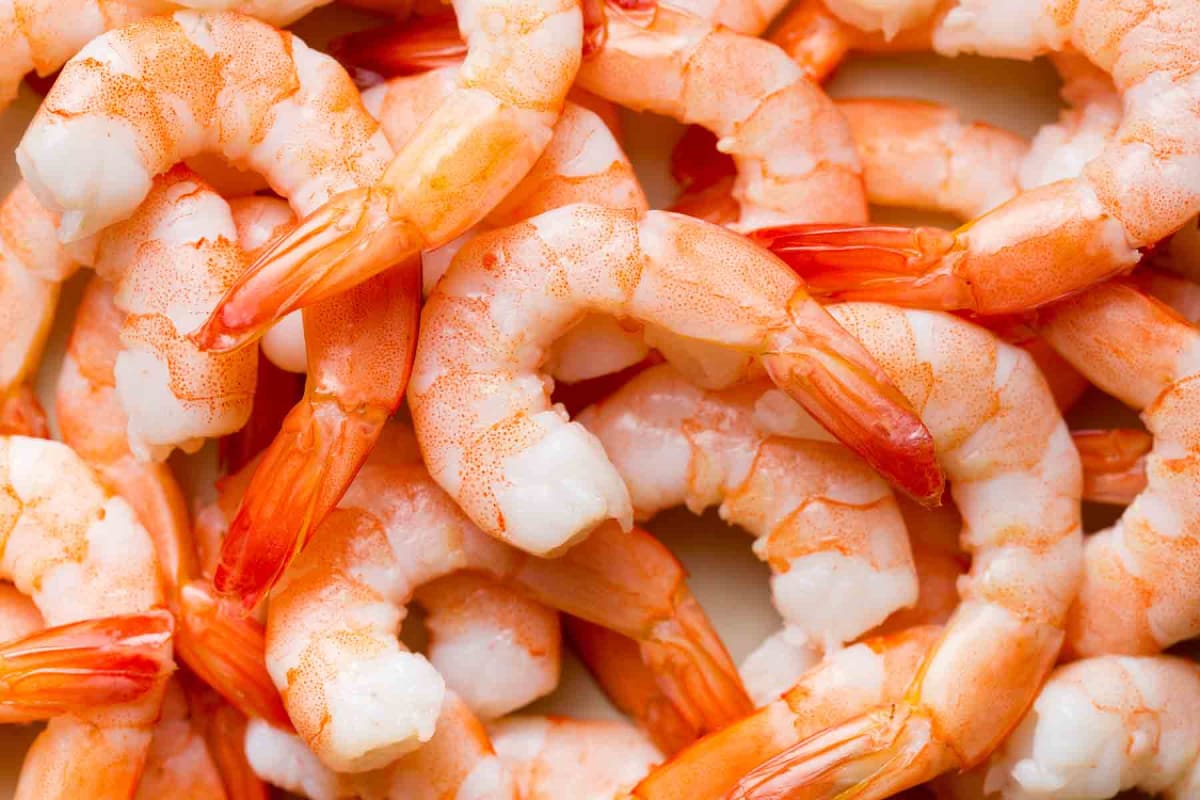
Can dogs eat shrimp?
Can dogs eat shrimp?
Can dogs have shrimp?
Shrimp is a popular choice for humans, but what about our four-legged friends? The answer is yes, dogs can eat shrimp in moderation. Shrimp can be a healthy and tasty treat for your canine companion when prepared correctly. However, there are important considerations to keep in mind before sharing this seafood delight with your dog.
Is shrimp good for dogs?
Shrimp is low in calories, carbohydrates, and fat, but high in protein, making it a potentially healthy snack option. When fed in small amounts, this seafood treat can provide several nutritional benefits for your furry friend:
The omega-3 fatty acids in shrimp can contribute to healthier skin and coat for your dog.
Shrimp contains valuable nutrients including vitamin B12, which supports your pup's metabolism and gastrointestinal health.
Shrimp is rich in phosphorus, niacin, and antioxidants that may help improve your dog's health.
Shrimp contains glucosamine, which may support joint health—particularly beneficial for older dogs or breeds prone to joint issues.
When is shrimp bad for dogs?
Despite its benefits, there are situations when shrimp may be harmful to dogs:
Raw or undercooked shrimp: These can contain harmful bacteria like salmonella or listeria, which can cause infections in dogs.
Seasoned or fried shrimp: Seasonings commonly used with shrimp—including garlic, onion, and excessive salt—are toxic to dogs.
Allergic reactions: Some dogs may be allergic to shellfish. Watch for signs of allergies such as itching, swelling, or vomiting after feeding shrimp.
Health conditions: Shrimp has high cholesterol content, which can be problematic for overweight dogs or dogs with certain health conditions, such as pancreatitis or heart problems. Consult your veterinarian before offering shrimp.
Can dogs eat shrimp tails?
No, dogs should never eat shrimp tails. The tails pose a serious choking hazard and can cause intestinal blockage if swallowed. The sharp edges might also damage your dog's digestive tract as they pass through.
Always remove the tails completely before giving shrimp to your dog. It's better to be safe than sorry when it comes to potential choking hazards or digestive emergencies.
Can dogs eat raw shrimp?
As we noted earlier, dogs should never eat raw shrimp. Raw shellfish may contain harmful pathogens and parasites that can cause serious health issues for your pet. Always make sure shrimp is thoroughly cooked before sharing with your canine companion.
How to prepare shrimp for your dog
The safest way to prepare shrimp for your dog is to steam, boil, or bake it plain without any oils, butter, or seasonings. Remember that dogs don't need the extra flavors that humans enjoy. To safely feed shrimp to your dog:
Choose high-quality, fresh shrimp from a reputable source.
Remove the shell, tail, and veins completely.
Cook the shrimp thoroughly without adding seasoning.
After cooking, allow the shrimp to cool completely.
Cut the cooked shrimp into small, bite-sized pieces appropriate for your dog's size.
How much shrimp can dogs eat?
As with all treats, moderation is key when feeding shrimp to dogs. Even for healthy dogs, shrimp should be an occasional treat, not a regular part of their diet. A good rule of thumb is to offer one or two small shrimp for medium to large dogs, and even smaller portions for smaller breeds.
When introducing shrimp for the first time, start with just a tiny piece to ensure your dog doesn't have any adverse reactions. If they tolerate it well, you can gradually offer slightly more.
Alternatives to shrimp for dogs
If you're looking for other seafood options or treats for your dog, the list below offers some low-mercury alternatives. Remember, while these alternatives can be healthy additions to your dog's diet, they should always be given in moderation and as part of a balanced diet approved by your veterinarian.
Flounder
Green-lipped mussels
Herring
Salmon
Sardines
Whitefish (ocean or lake)
To expand your dog's treat rotation beyond seafood, see our additional guides that break down what fruits dogs can eat, what vegetables dogs can eat, and foods that are toxic to dogs.